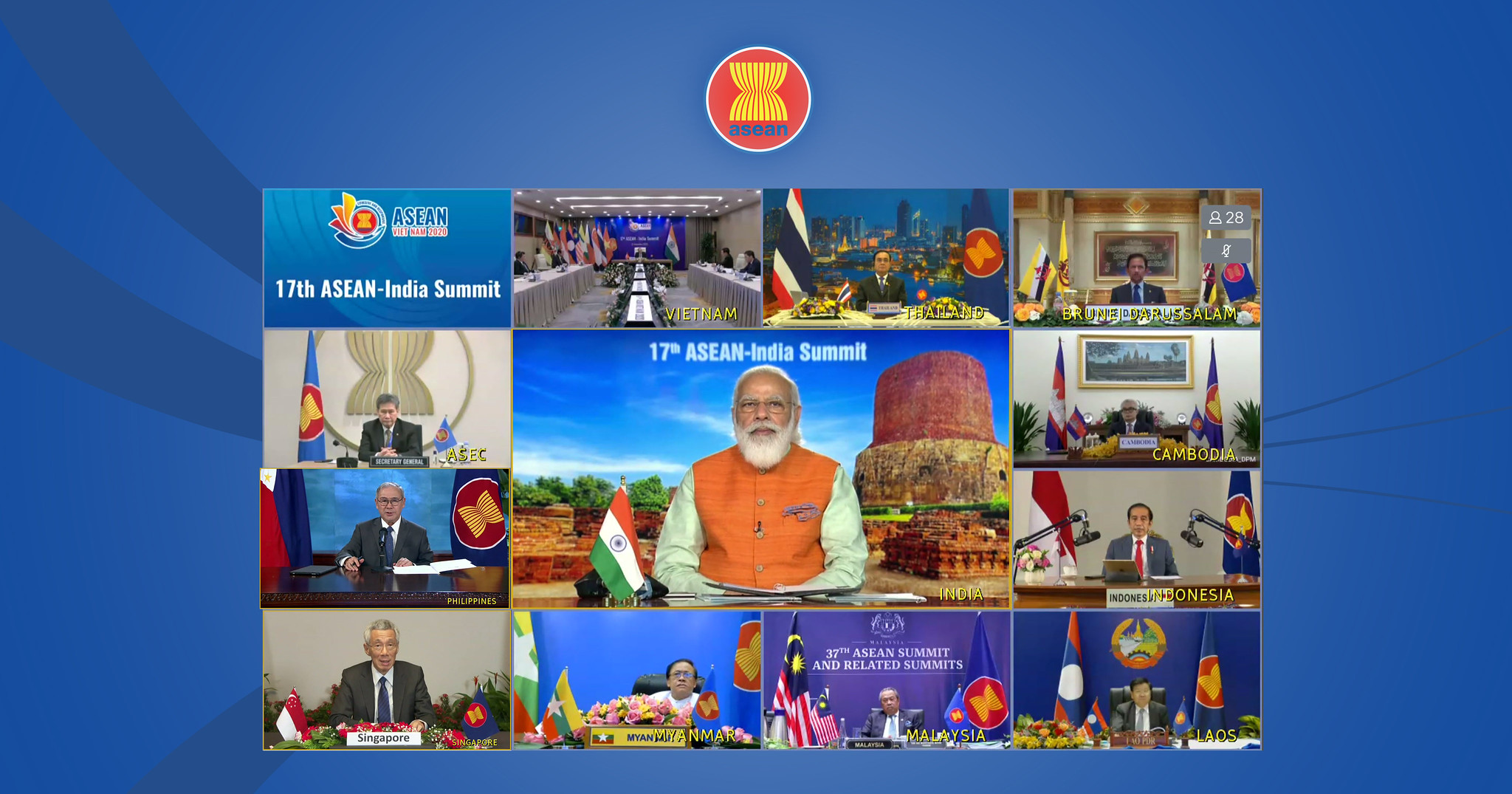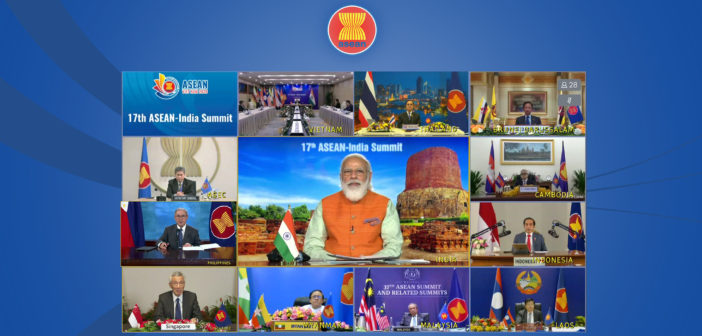
By Sarosh Bana, Mumbai Correspondent
Concerted action against the widening menace of cyber crime and fraud throughout the Indo-Pacific region has been made a priority at the flurry of meetings between the 10-member Association of South-East Asian Nations (ASEAN) and ‘Dialogue Partner’ India. ASEAN Member States are Brunei Darussalam, Cambodia, Indonesia, Lao, Malaysia, Myanmar, Philippines, Singapore, Thailand and Viet Nam.
The 17th ASEAN-India Summit held in November via videoconference, which was chaired by Viet Nam’s Prime Minister Nguyễn Xuân Phúc and attended by ASEAN leaders and India’s Prime Minister Narendra Modi, agreed that with growing dependence on digital technologies and an ever expanding footprint in cyber space, it was critical to formulate and implement measures for securing their cyber domain from malicious actors.
A joint statement issued at a similar ASEAN-India summit in September on Partnership for peace, progress and shared prosperity (2021-2025) expressed the resolve to “strengthen cooperation, capacity building, and policy coordination on cybersecurity, including in personal data protection, and support the implementation of the ASEAN Cybersecurity Cooperation Strategy by engaging relevant ASEAN mechanisms and institutions”. This was pertinent in view of another Summit objective to “promote further ICT cooperation through relevant mechanisms, including capacity building and knowledge sharing, in areas such as e-commerce, Artificial Intelligence, Internet of Things (IoT) & 5G, ICT in Disaster Management, Creating smart societies through ICT, Cyber Forensics, Next Generation Transmission Technologies, Future Trends in Mobile Communication, Advanced Satellite Communication and Regulatory and Policy issues”.
A recent assessment report by Interpol, COVID-19 Cyber Crime Impact on Asia and the South Pacific Region, warns that cyber criminals are taking advantage of the economic downturn and of people’s anxieties and have enhanced their social engineering tactics by using COVID-19 as the basis for their attacks. The dilemma has been aggravated by the scourge of “fake news”, “wrong information” and, in some cases, “targeted disinformation”. This ‘infodemic’ of information is enlarging enough to hinder countries’ abilities to craft proper public health and economic responses to the COVID crisis.
The World Economic Forum cites a virulent rise in cyber attacks and data fraud as a huge public concern during the pandemic. Also, with online activities spiralling due to lockdowns and Work From Home (WFH), radical elements are using social media platforms to disseminate misinformation through hate speech, fake news and doctored videos, seeking especially to target vulnerable individuals. However, underscoring the importance of greater physical and digital connectivity between ASEAN and India, Modi reiterated India’s offer of a $1 billion Line of Credit to support ASEAN connectivity.
The 2nd ASEAN-India Track 1.5 Dialogue on Cyber Issues, held virtually in October, focussed on cooperation and security in the digital and cyber domain in the backdrop of the on-going coronavirus pandemic.
The COVID-19 pandemic has accelerated the ‘digitisation’ and ‘cyberisation’ of engagements, with a surge in social media, WFH becoming the new norm, and there being greater dependence on digital payment platforms due to reduced cash handling. It was discussed in the meeting that increasing interconnectedness is also heightening the dangers related to cyber crime. There is evidence of COVID-19 related frauds, phishing campaigns, and online sale of fake medical supplies and PPEs.
Highlighting the dangers involved with cybercrimes, Vijay Thakur Singh, Secretary (East) in India’s External Affairs Ministry, remarked, “Increased dependence on digital technologies has created both pressures and opportunities for creative policy solutions and regional collaboration to foster a secure, resilient and equitable cyberspace.” Referring to the dangers associated with this activity, he deemed it imperative to formulate and implement measures for securing cyber domain from the malicious actors.
India and ASEAN also resolved to strengthen cooperation on cybersecurity by executing the ASEAN Cybersecurity Cooperation Strategy. ASEAN has come up with a set of solutions to curb cyber crimes, namely, e-ASEAN Framework Agreement, ASEAN Economic Community 2025, and Master Plan of ASEAN Connectivity (MPAC 2025). In turn, New Delhi launched India’s Centres of Excellence in Software Development and Training (CESDTs) in Cambodia, Lao, Myanmar and Vietnam to enhance digital cooperation. India is moreover funding the ‘Child Online Risks Awareness Campaign’ and ‘Building Capacity on Digital Public Services Implementation and Cyber Security for Government Agencies’ as Quick Impact Projects in Cambodia.
India has a significant economic relationship with ASEAN, being the grouping’s sixth largest trading partner and eighth largest source of FDI amongst ASEAN Dialogue Partners. Two-way trade reached $77 billion in 2019, while FDI inflows from India totalled $2 billion. Both sides have underscored the importance of further strengthening trade and investment to ensure greater market access and to facilitate trade for businesses, including through the full utilisation of the ASEAN-India Free Trade Area (AIFTA).
There is no doubt that digital technology is a great enabler, because as the world faces travel restrictions alongside stringent social distancing measures, this technology is bringing people together to exchange views, hold discussions and come up with solutions. Digital technologies are also playing a key role in keeping supply chains open for an accelerated and sustainable economic recovery in the region.
“Increased dependence on digital technologies has created both pressures and opportunities for creative policy solutions and regional collaboration to foster a secure, resilient and equitable cyberspace,” mentioned Singh, while addressing the Track 1.5 Dialogue. “As experts on this subject, you are all well aware about the challenge that policy makers and industry face in managing policy and social changes, along with the exponential rate at which technology transforms our world.”
Singh pointed to India as a case in point, the country having become the second largest internet user base globally, with internet penetration crossing the 50 per cent mark with about 700 million internet users and projected to reach 1 billion by 2025. According to an India Cellular and Electronics Association Report, the number of smart phone users in India is expected to reach 820 million by 2022. As India’s digital economy is consequently generating around $200 billion annually and is poised to reach between $800 billion to $1 trillion by 2025, this also raises daunting challenges for its policy makers, with the number of cyber crimes swelling by 500 per cent in the last five years.
With more than half of its 643 million people below the age of 30, ASEAN is passing through a similar digital growth trajectory. The World Economic Forum calls ASEAN the fastest growing internet market in the world. With 125,000 new users of internet every day, the ASEAN digital economy that generates around $150 billion every year, is anticipated to add an estimated $1 trillion to regional GDP in the coming decade.
However, with progress often comes gloom. As with India, ASEAN too is witnessing an escalation of cyber crimes.






